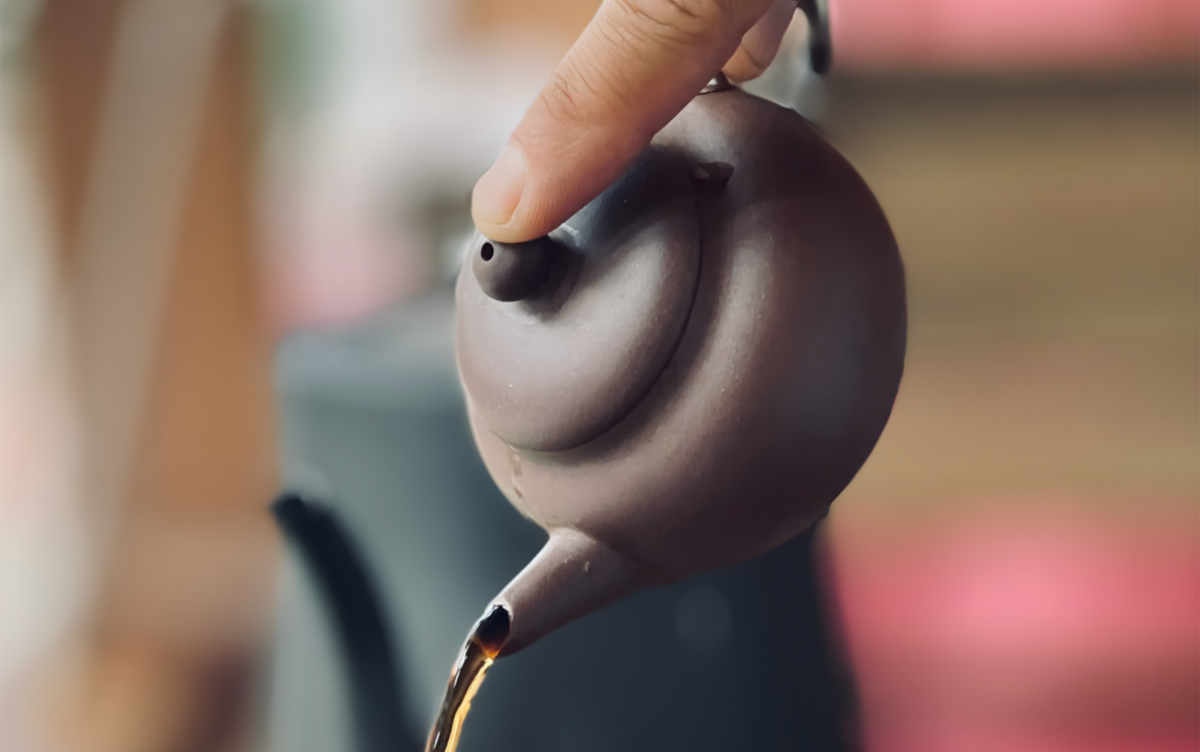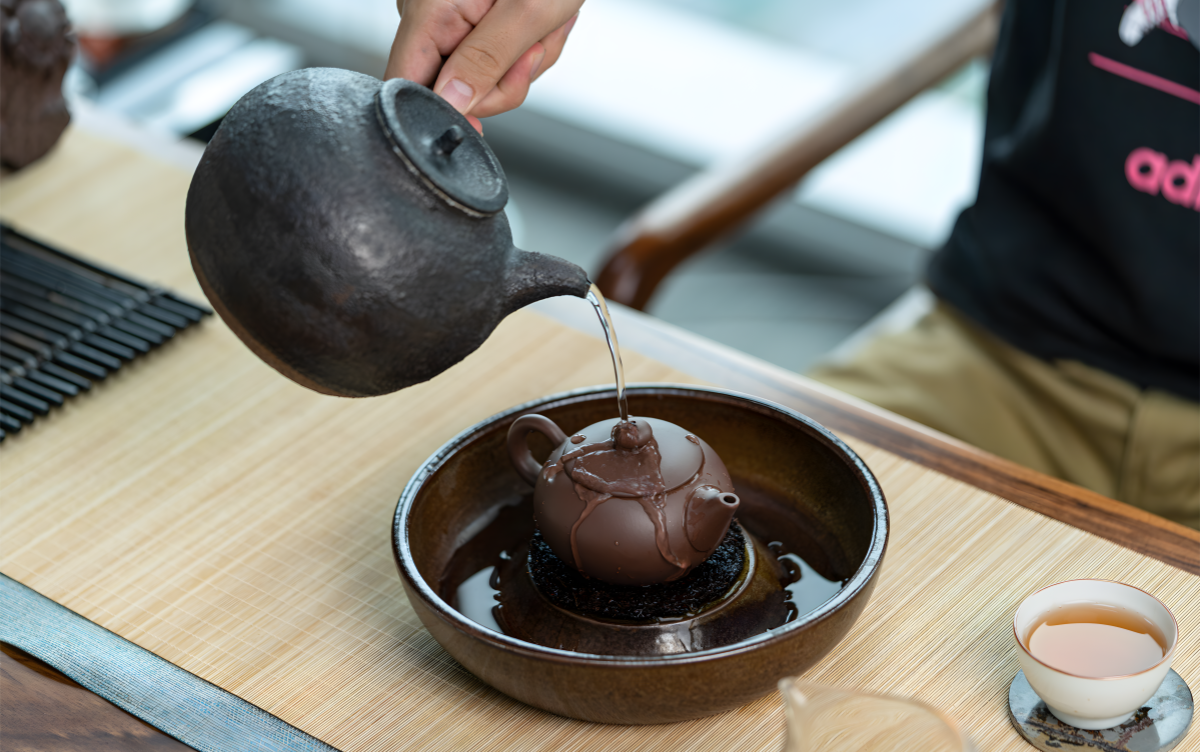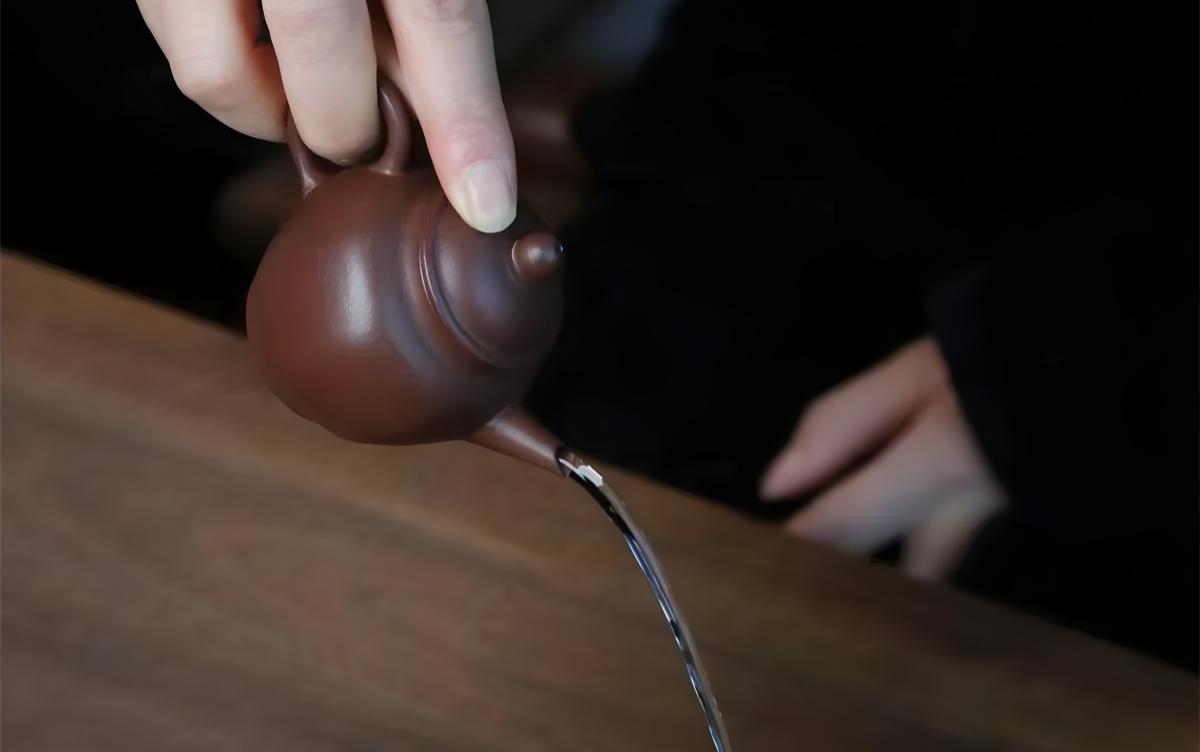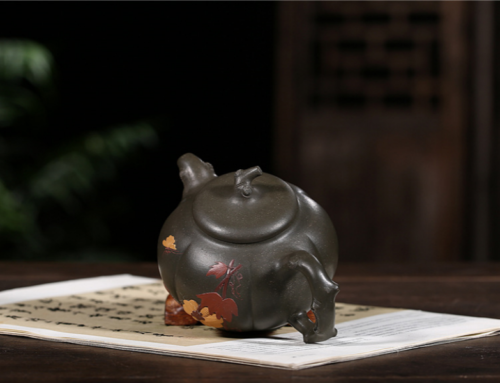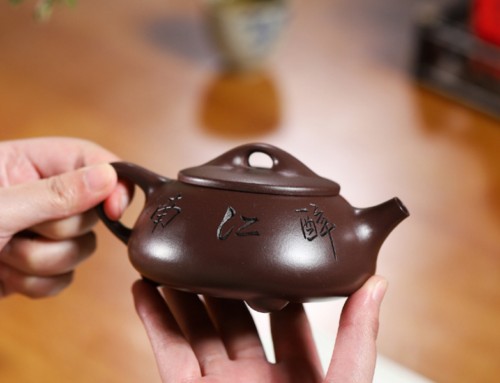Asian Teapots and how to make tea the Asian way (the tools and method)
Introduction
In Asian culture, tea isn’t just a drink. A symbol of hospitality, tradition, and mindfulness, brewing tea the Asian way evokes something larger than the sum of its parts, connecting tea drinkers to a cultural legacy and tradition that dates back centuries. Technique and chic accessories almost always accompany the process—and Asian teapots play a big role in the ritual.
Asian teapots don’t just hold tea. Their precise construction helps bring out the best features of tea or aromas of them. From the porous Yixing clay teapots to the smooth Japanese Kyusu teapots, each style is designed for a purpose. Brewing tea in a traditional teapot also pays tribute to the art of tea, and you will be able to enjoy the taste much better.
In this blog post, we’ll delve into the intriguing world of Brewing Tea the Asian Traditional Way with Asian Teapots: Techniques and Tools and touch on types of teapots, brewing techniques, essential accessories, common mistakes and more. Whether you’re new to Asian teapots or a seasoned tea drinker, this guide will provide you with the knowledge you need to elevate your tea brewing skills.
Types of Asian Teapots
Common Styles of Asian Teapots
These teapots were created for very specific uses within each culture, with the goal of making the tea-drinking experience pleasurable and beneficial. Since there are regional differences even in each style, the following are three of the more well-known styles created within the
Yixing Clay Teapots – made in China of course. Yixing pots are made with purple clay from the Yixing region of China known as “zisha”. The porosity of the clay coupled with the seasoning of your pots allows the teapot to absorb the flavor of the tea and enhance it over time. These china types teapots are more suited to oolong, black, and pu-erh teas. Fun fact! Yixing tea pots should never be washed using soap or they will lose their flavour enhancing properties.
Kyusu Teapots: A Kyusu teapot is a traditional teapot used in Japanese tea culture, typically made of ceramic and is most commonly designed with a side handle. They are typically used for brewing Japanese green teas like sencha and gyokuro, as the fine mesh filter found in most kyusus makes it easy to brew loose tea leaves without letting any escape.
Gaiwan Chinese The Gaiwan is a lidded bowl that is used for the infusion of tea leaves and consumption of tea. It is appropriate for tea-drinkers interested in the delicate taste and aroma of white and green tea as the simple design allows for the drinker to smell the aroma and gauge the effect of the leaves on the water.
Sale!

Skinny vessels from another realm. Tea Recommendations: Red Jade Black Tea (Hongyu tea, No
$25.00 Original price was: $25.00.$12.00Current price is: $12.00.
52% Off
Sale!

$25.00 Original price was: $25.00.$12.00Current price is: $12.00.
52% Off
Sale!

Where ancient celestial craftsmanship encounters living clay—each brew enhances the soul of your tea.
$34.00 Original price was: $34.00.$12.00Current price is: $12.00.
65% Off
Sale!
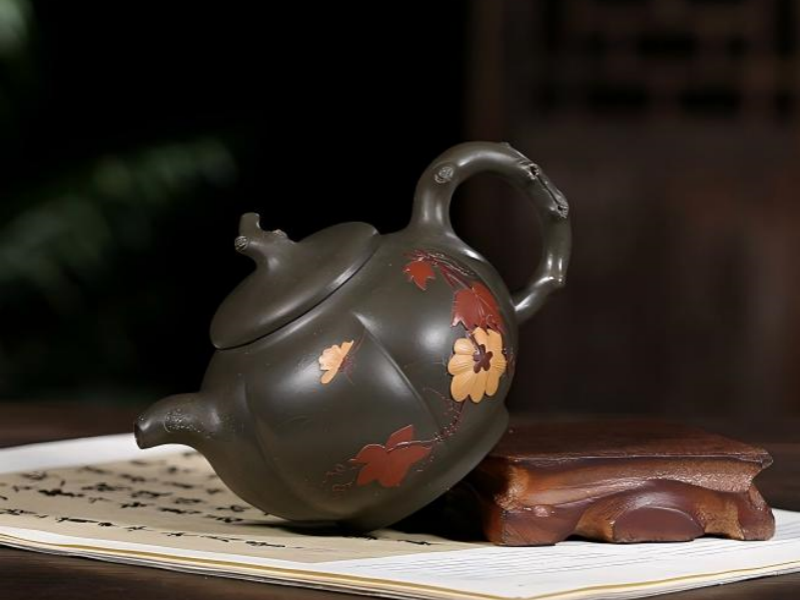
Purple Clay Alchemy: Where Ancient Zisha Stone Transforms Every Brew into a Meditative Journey
$24.00 Original price was: $24.00.$12.00Current price is: $12.00.
50% Off
Sale!

Unleash the essence of brewing with the Yixing Ware’s beautiful Phoenix Egg tifting pot.
$23.00 Original price was: $23.00.$12.00Current price is: $12.00.
48% Off
Sale!

Brew Like a Dynasty Scholar - Yixing Clay That Remembers Every Tea
$24.00 Original price was: $24.00.$13.00Current price is: $13.00.
46% Off
Choosing the Right Teapot
The best teapot for you depends on several factors, including:
Purpose: Decide whether you want a teapot for everyday use or for for ceremonial brewing.
Tea type: Choose a teapot of suitable material according to the type of tea to be brewed. Consider pairing Yixing teapots with aged teas and Kyusu teapots with green teas.
Material: Heat retention is important to consider. These are usually more durable as well. Clay teapots help develop flavors. Cast iron teapots retain heat the longest.
Budget: The prices of authentic Asian teapots range from inexpensive to high end.
The right teapot makes your tea-making practice even better and helps you connect to the rich history and craftsmanship of Asian tea culture.
Asian Tea Making Techniques
How to Season Your Teapot
To brew tea Asian way, you must prepare teapot first. Preparing of teapot prolong the life of teapot and brings better taste of the tea. However, different types of teapot need unique methods:
Clean and season clay teapots Yixing clay teapots should be cleaned in a special manner. Before the first using the teapot, rinse it with hot water. Tea lovers sometimes will boil the teapot in water boiled with tea leaves to season in order for the clay to absorb the tea’s essence. Soaps and detergents may interfere with the function of the porous clay to absorb the essence.
Preparing a Gaiwan: The Gaiwan is incredibly easy and convenient to use. Simply quick rinse it using hot water to warm up the vessel prior to brewing and you are ready to go. Warming it up prevents any possible change in temperature while steeping the tea, this is especially useful for more delicate teas such as green and white.
Kyusu Teapots Ceramic Kyusu teapots are easy to maintain, however rinsing quickly with warm water before use allows the ceramic to adjust to the increase in temperature before adding hot water. The structure of the teapot allows for quick brewing so they do
The first step to a more authentic brew is proper preparation, allowing various utensils to lend themselves to the entrance of subtle flavours.
Brewing Methods
Brewing tea the Asian way is an art perfected over centuries. These are two of the most popular techniques:
Gongfu Brewing: Traditional Chinese tea brewing method that usually takes a small Yixing teapot or Gaiwan to brew tea with concentrated flavours. Normally multiple short infusions required.
Heat water to the appropriate temperature (eg. 85-95°C for Oolong tea).
Add loose leave tea into the teapot / Gaiwan, about 5 grams for 150 ml water.
Pour hot water over the leaves to rinse them, and immediately discard the water.
Steep for 10–20 second for the first infusion. Gradually increase steeping time for each subsequent infusion.
Serve in small cups for full, bold flavor.
Japanese Brewing with Kyusu Teapots Japanese tea brewing tend to be more precise, they are less complicated and focus on clarity. This tea brewing guide will be helpful when making
Heat water to around 70–80°C
Measure 2–3 grams of tea leaves per 100 ml of water and place them into the Kyusu teapot. Brew 30–90 seconds depending on tea.
Pour slowly, over the ice, ensuring even coverage and balanced flavour extraction.
We can enjoy tea better as each method brings out different subtleties in brewing.
Brewing Various Tea Types
Various techniques are used to obtain the best possible brew from different types of tea.
Green tea: Brew at lower temperatures (70 to 80°C) and for less time (typically 30 seconds to 1 minute). Steeping
Oolong Tea: Multiple infusions reveal complex layers of flavor; start with short steeping times and increase until flavors mellow.
Pu-erh Tea: Rinse the tea leaves first to wake them up lightly. Pu-erh tea often has an earthy and aged profile. You can start with a steeping time of 1-2 minutes.
Matcha: Powdered green tea that is whisked with hot water in a bowl with a bamboo whisk. The result is a frothy bright green tea that is rich and full of umami.
By applying these tips, every variety of tea will brew to its maximum flavor and aroma potential.
Assisting Gadgets for Asian Tea Pots
Must-Have Accessories
When brewing tea in the Asian manner, you will probably require more equipment than simply a teapot. There is an array of accessories, differing from style to style, that combine with an Asian teapot to augment the experience and facilitate accuracy. Of course, an Asian tea enthusiast probably wouldn’t refer to these merely as tools or accessories. They would concerning terms like ‘properness’ and ‘gracefulness.’ Listed below are a few accessories of Asian teapots and cups.
Tea Trays: Tea Trays, when used, represent an important tea accessory as it will be used to catch overflow water and tea during Gongfu sessions, as well as providing a dedicated space for your Gongfu operation. Tea trays may be made of bamboo or other woods, but other materials may be used.
Tea Kettles: When brewing tea the Asian way, whether you’re making, green, white, black or oolong tea, temperature matters. If you’re into drinking green tea and need precision when it comes to temperature, electric kettles allow you to set the water temperature to achieve the perfect brew, but the stovetop kettles are also a popular option.
Tea Scoops: Proper measurement of loose-leaf tea is crucial for ensuring the right flavor, and many tea drinkers choose to purchase specialty, often decorative, tea scoops to perform the precise measurements. They are mainly
Strainers: Fine strainer help to sive the excessive loose tea. Kyusu teapots and Gaiwan sieve some tea leaves, but they are not good at that.
Matcha whisks and bowls: Bamboo whisks and ceramic bowls are important tools for making Japanese tea. Bamboo whisks (茶筅; chasen) are used to prepare matcha, a Japanese green tea, by mixing the powdered tea with hot water. Ceramic bowls are used in serving the matcha.
The investment in these tools enables the tea lover to replicate the elaborate brewing practices of Asian tea cultures, while enjoying greater involvement in the tea-drinking process.
Common Mistakes and Troubleshooting
Common Mistakes
Brewing tea the Asian way requires subtle knowledge. A single wrong move will either ruin the tea or affect the flavor and overall experience. Here are a few common faux pas, and how you can avoid them:
Oversteeping or understeeping: Timing is everything. Oversteeping can lead to bitterness, whereas understeeping creates a weak flavor. Use a timer to track your steeping times precisely.
Using Wrong Temperature: Each tea has an ideal brew temperature. For example, green teas don’t like boiling water. Teas like oolongs that are more oxidized will do with warmer water (85-95°C). For more delicate teas, like fresh greens, white teas or lightly oxidized oolongs it is best to use cooler water (70-80°C). Using unmatched temperatures will “cook”
Neglecting Teapot Maintenance It’s important to keep an eye on cleaning and maintaining your teapots (Yixing teapots in particular). If you don’t, you’ll likely miss residue clumping together, resulting in your next brew tasting not the best it could have been.
By avoiding these five mistakes, you’ll be able to brew tea without as much frustration.
Tea Troubleshooting
Even experienced tea drinkers struggle to make good tea. Here are some of the common problems and solutions:
Bitter taste: Over-brewing or overly hot water are common causes of this. Try adjusting steeping time and temperature. Green tea, for example, can benefit by steeping for less time and/or using cooler water.
Cloudy Tea: Using poor quality water or over-agitating tea leaves can leave your pitcher of tea looking cloudy. Use filtered water to give it a clear appearance, and pour lightly to minimise disturbance.
Weak Flavor: If your tea tastes flat or lacks depth, you are probably not using enough tea leaves or steeping the tea for long enough. Adjust the amount of tea leaves—try adding a little bit more tea leaves—or allow the tea to steep longer to extract more flavor.
Troubleshooting ensures that your brewed tea matches the high standard of Asian tea culture and you can enjoy every sip.
Conclusion
The Asian way of brewing tea and Asian teapots are not only a method in boiling water and making tea: It is an art form that incorporates tradition, mindfulness and taste. Choosing the best teapot, how to brew Gongfu tea or how to prepare matcha, the rich cultural history permeates each step of the process. The tea tools and accessories, whether its tea trays or kettles to assist your tea journeys are an integral part of the tradition and purpose built for accuracy and continuation of tradition from beginning to end.
Avoiding common mistakes and troubleshooting issues ensures each brew is to standard and an understanding of tea types and its nuances helps unlock the full potential of each variety. With rich flavors, calming rituals, and connection to heritage, Asian tea brewing is an enriching journey.
Whether you are a seasoned tea drinker or perhaps trying to broaden your horizons, incorporating some of these methods and tools will nearly guarantee an improved and deeper enjoyment of tea drinking. So pick up an authentic Asian teapot, your choice of loose-leaf tea, and enjoy the ancient art of Asian-style tea brewing today.
